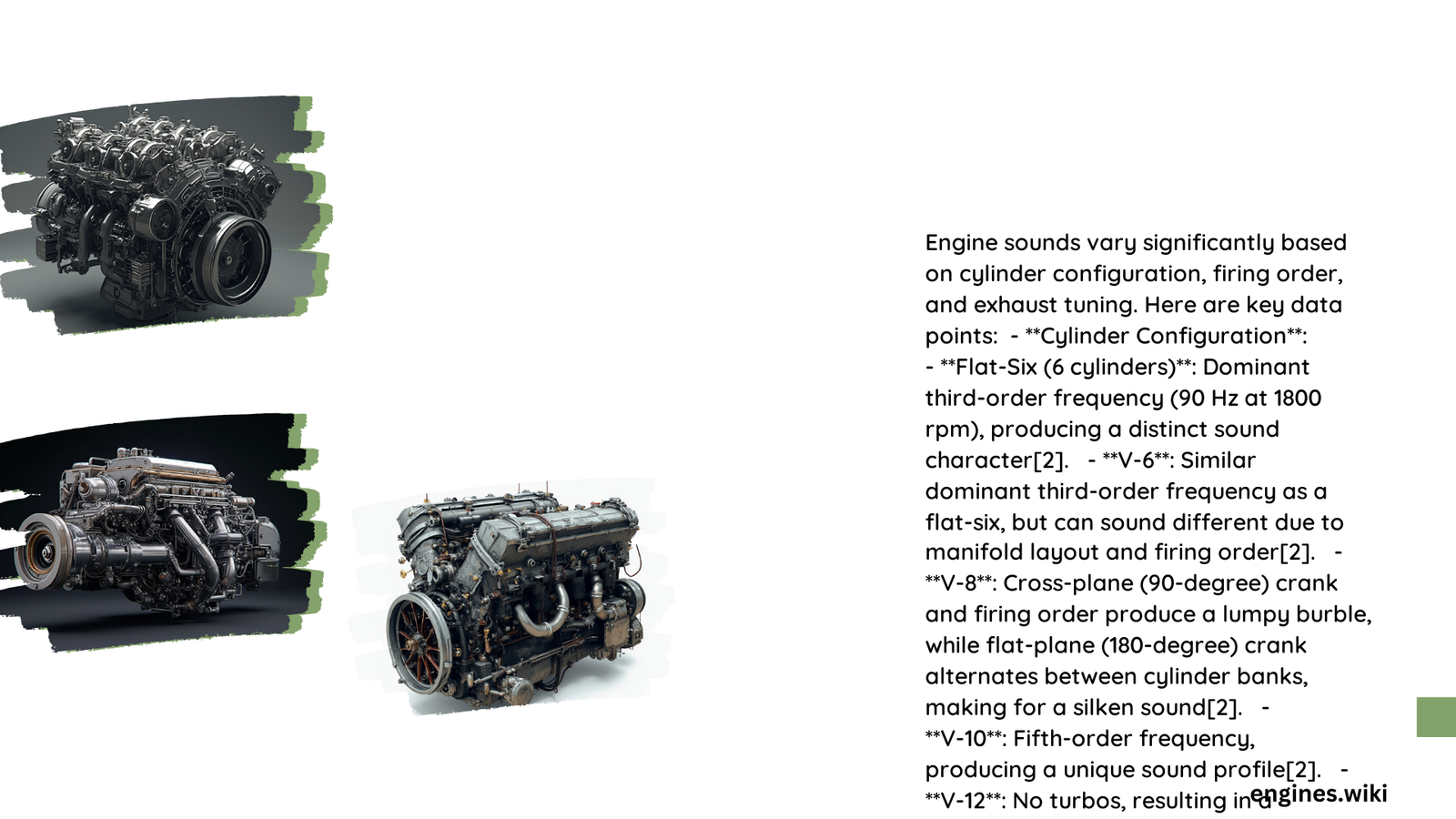Engine sound comparison reveals a complex acoustic landscape where mechanical engineering meets auditory experience. Modern vehicles produce unique sonic signatures influenced by engine configuration, displacement, aspiration method, and exhaust system design. From the raw, unbridled roar of naturally aspirated sports cars to the refined whisper of luxury sedans, each vehicle tells a sonic story that goes beyond mere mechanical noise.
What Determines Engine Sound Characteristics?
How Do Decibel Levels Vary Across Different Vehicles?
Vehicle sound profiles demonstrate significant variation across different models and engine types. Here’s a detailed breakdown:
Comparative Decibel Measurements
| Vehicle Model | Idle Sound (dB) | Cruising Sound (dB) | Acceleration Sound (dB) |
|---|---|---|---|
| BMW X7 40i | 49.2 | 49.2 | 52-55 |
| Lexus RX 350 F-Sport | 51.3 | 53.5 | 56-59 |
| Toyota Camry XSE | 52.1 | 54.6 | 57-60 |
What Influences Engine Sound Quality?
Several critical factors contribute to engine sound characteristics:
- Engine Configuration
- Inline engines produce smoother, more balanced sounds
- V-type engines generate more aggressive, muscular tones
-
Horizontally-opposed engines create unique, balanced acoustic signatures
-
Aspiration Method
-
Naturally Aspirated Engines
- Clearer, more resonant sound
- Broader frequency range
- Example: Porsche 911 GT3’s distinctive exhaust note
-
Turbocharged Engines
- Softer, more muffled sound
- Reduced high-frequency components
- Example: Porsche 911 Turbo S with dampened exhaust note
How Do Exhaust Systems Impact Sound?
Stock vs. Aftermarket Exhaust Systems
- Stock Systems
- Designed for noise regulation compliance
- Include sound-dampening components
-
Prioritize noise reduction
-
Aftermarket Systems
- Increase sound pressure levels
- Enhance acoustic aggression
- Modify frequency ranges
- Potential SPL increase: 3-7 decibels
What Role Does Engine Displacement Play?
Engine displacement significantly influences sound, but it’s not the sole determinant:
- 4-Liter Comparison
- Porsche 911 GT3 (Naturally Aspirated): High-revving, clear sound
- McLaren 720S (Twin-Turbo): Softer, less engaging tone
Technical Sound Characteristics
Frequency and Harmonic Analysis
- Frequency Range:
- Naturally Aspirated: 200-7000 Hz
-
Turbocharged: 150-5500 Hz
-
Harmonic Content:
- Naturally Aspirated: Rich, complex harmonics
- Turbocharged: Reduced harmonic complexity
Practical Considerations

Cost and Installation Factors
- Aftermarket Exhaust System Costs
- Basic systems: $300-$800
-
Premium systems: $1,000-$3,500
-
Installation Complexity
- Simple bolt-on replacements
- Complex modifications requiring professional expertise
Key Takeaways
- Engine sound is a multifaceted acoustic experience
- Multiple factors influence sound characteristics
- Personal preference plays a significant role in perception
Recommendations
- Consider vehicle’s intended use
- Listen to multiple sound profiles
- Understand technical acoustic parameters
- Consult professional installers for modifications
